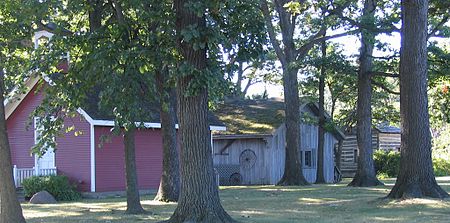Deerfield, Illinois
1903 establishments in IllinoisChicago metropolitan areaDeerfield, IllinoisPopulated places established in 1835Populated places on the Underground Railroad ... and 5 more
Sundown towns in IllinoisUse mdy dates from July 2023Villages in Cook County, IllinoisVillages in IllinoisVillages in Lake County, Illinois

Deerfield is a village in Lake and Cook counties in the U.S. state of Illinois. A northern suburb of Chicago, Deerfield is located on the North Shore, about 28 miles north of downtown Chicago. The population was 19,196 at the 2020 census.Deerfield is home to the headquarters of Walgreens Boots Alliance, Baxter Healthcare, and Fortune Brands Home & Security. Deerfield is often listed among some of the wealthiest and highest-earning places in Illinois and the Midwest. The per capita income of the village is $68,101 and the median household income is $143,729.
Excerpt from the Wikipedia article Deerfield, Illinois (License: CC BY-SA 3.0, Authors, Images).Deerfield, Illinois
Walnut Street,
Geographical coordinates (GPS) Address Nearby Places Show on map
Geographical coordinates (GPS)
| Latitude | Longitude |
|---|---|
| N 42.168333333333 ° | E -87.851388888889 ° |
Address
Walnut Street 945
60015
Illinois, United States
Open on Google Maps






